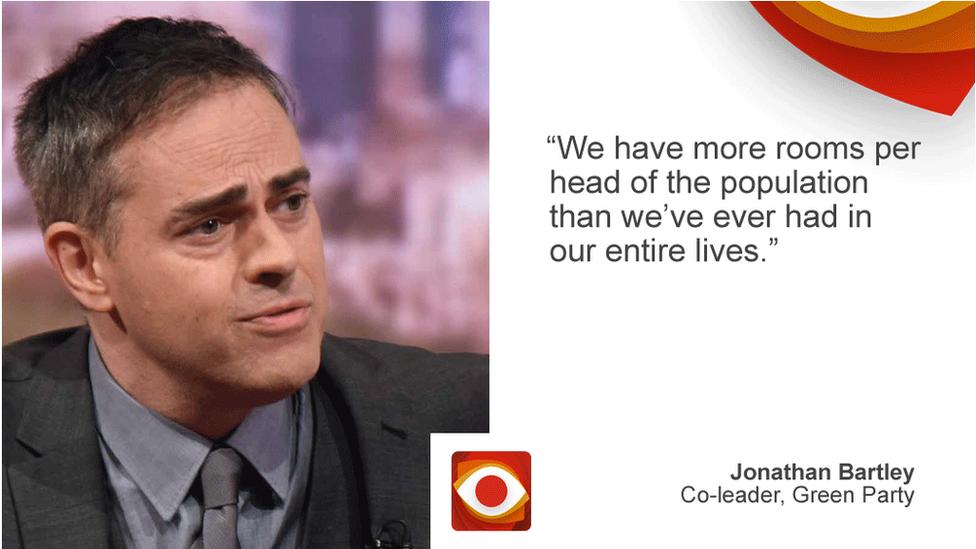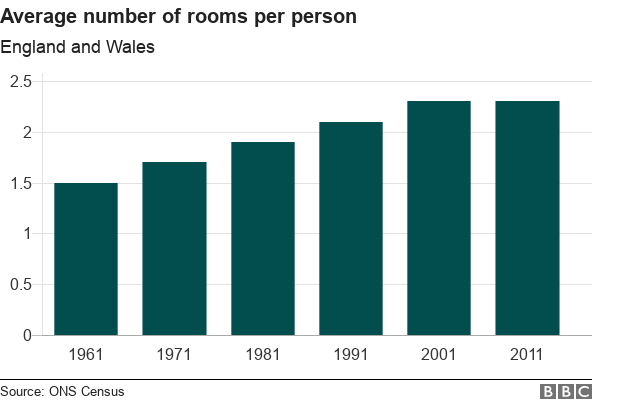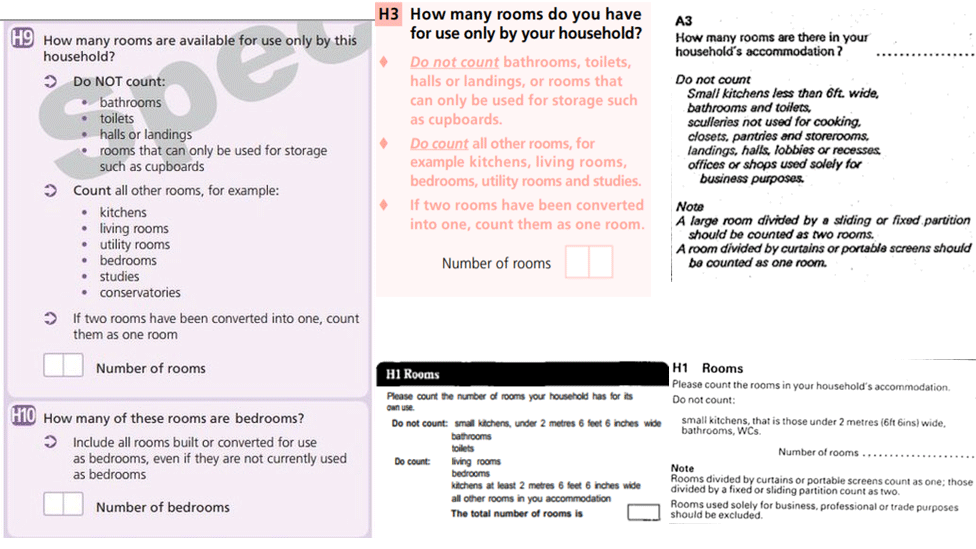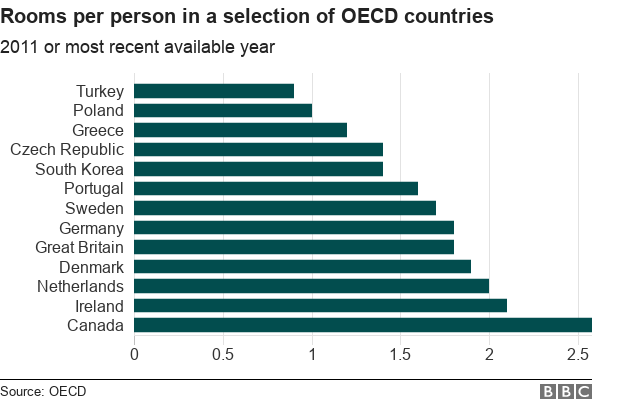Do we have more rooms per person than ever before?
- Published

The claim: Rooms per head of the population is the highest it's been in our lifetimes, according to the last two Censuses of England and Wales.
Reality Check verdict: Jonathan Bartley is right when he refers back to 1961 (he was born in 1971), although the figure was unchanged between 2001 and 2011.

Green Party co-leader Jonathan Bartley was on London radio station LBC recently talking about the prospect of building homes on green belt land.
He told presenter Nick Ferrari that the housing crisis was a problem of allocation because, "we have more rooms per head of the population than we've ever had in our entire lives".
He referred to the 2001 and 2011 Censuses as the source of this claim.
There was actually no change in the number of rooms per person between 2001 and 2011, which was the most recent Census, but before that the level had been rising steadily since 1961.
The published figure is actually rooms per household, but by dividing by the average household size you can get to the number of rooms per head.

The trend in rising numbers of rooms per person since 1961 is clear.
The question about the number of rooms has been asked in the Census every 10 years since 1901, although there have been some changes to the way it is asked.
The 2011 Census asked about the number of rooms available for use by a household, including all rooms except bathrooms, toilets, halls, landings and any rooms that could only be used for storage such as cupboards.
For the first time in 2011, the Census also asked how many of those rooms could be used as bedrooms. The average number of bedrooms per household turned out to be 2.7. The average household size was 2.4, so there was an average of 1.1 bedrooms per person.

The series is not completely continuous because of changes in the status of small kitchens, which means part of the increase could be down to more kitchens counting as rooms. In 2011 and 2001 all kitchens counted as rooms.
In 1981 and 1991, kitchens smaller than 6ft 6in (2m) wide were not counted, but in 1971 it was kitchens below 6ft wide that were not counted.
The Organisation for Economic Co-operation and Development publishes comparative figures for rooms per person in its member states. Its figures are somewhat different to the Office for National Statistics (ONS) ones above, because it excludes kitchens and its figures include Scotland, although the ONS told Reality Check that the inclusion of Scotland made little difference to the overall average.
Great Britain comes out with 1.8 rooms per person under this measure, which is above the OECD average of 1.6.



